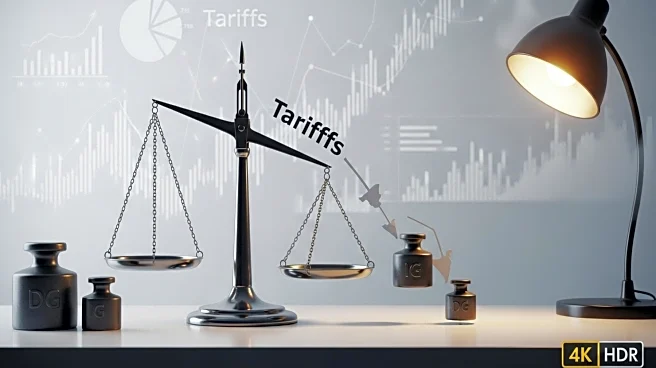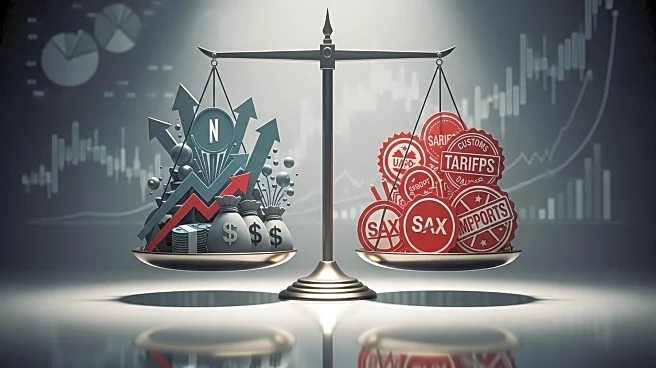What is the story about?
What's Happening?
The Consumer Price Index (CPI) rose by 0.4% in August, marking an increase in the annual inflation rate to 2.9%, the highest since January. This rise follows a 2.7% increase in July, with significant price hikes in groceries and fuel. Food prices at home saw a 0.6% increase, the largest monthly jump in nearly three years, while gas prices climbed by 1.9%. Economists attribute these increases partly to President Trump's policies, including tariffs and immigration reforms, which are being passed on to consumers. The job market is also showing signs of weakness, with real hourly earnings slowing to 0.7% in August, the lowest gain in over a year.
Why It's Important?
The rise in consumer prices is significant as it affects the cost of living for Americans, particularly at a time when the job market is unstable. The increase in prices for basic needs like food and fuel can strain household budgets, especially when wages are not keeping pace with inflation. The economic policies under President Trump, such as tariffs, are contributing to these price hikes, impacting consumer perception and potentially influencing political sentiment. The Federal Reserve is expected to cut interest rates, which may provide some relief, but the extent of its impact on consumer confidence remains uncertain.
What's Next?
The Federal Reserve is likely to cut its benchmark interest rate at its upcoming policy meeting, with traders pricing in a high probability of a quarter-point cut. This move is intended to support the economy and stabilize the labor market. However, the effectiveness of this rate cut in alleviating consumer concerns about rising prices is yet to be seen. Economists are watching for further inflationary pressures as businesses continue to pass on costs from tariffs to consumers. The administration may face increased pressure to address these economic challenges.
Beyond the Headlines
The inflationary trend highlights deeper issues related to economic policy and labor market dynamics. The impact of tariffs and immigration reforms on agricultural production and labor supply is causing disruptions, leading to higher prices. Additionally, the political implications of rising consumer costs could influence public opinion and policy decisions. The Federal Reserve's actions will be closely monitored as they navigate the dual mandate of full employment and price stability amidst these challenges.
AI Generated Content
Do you find this article useful?
















